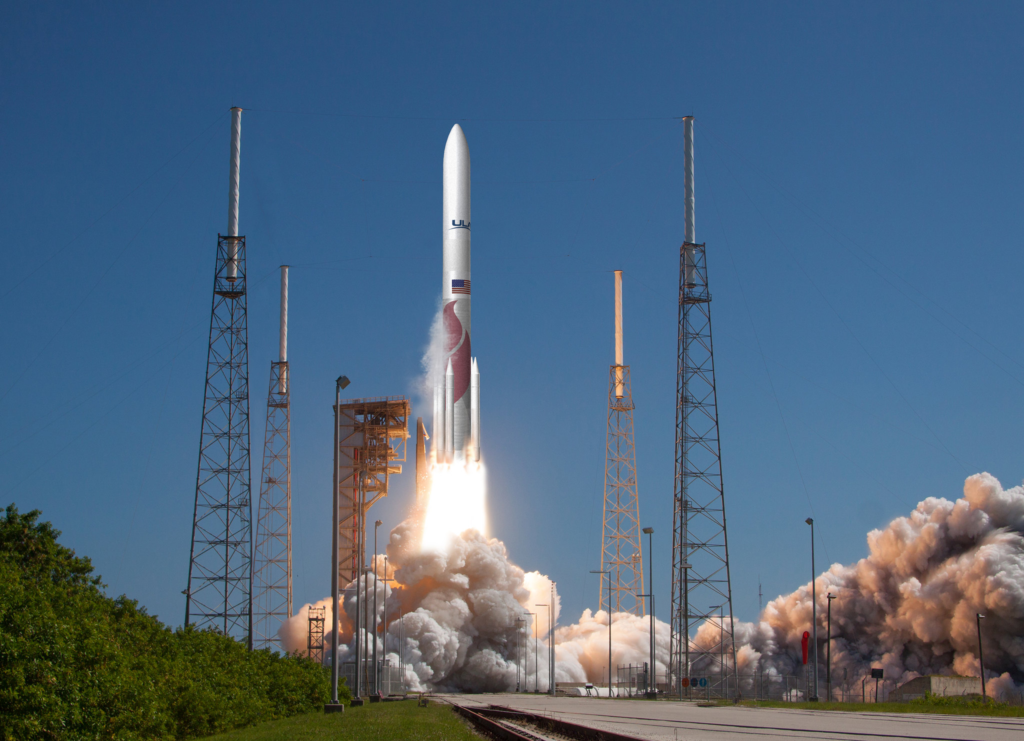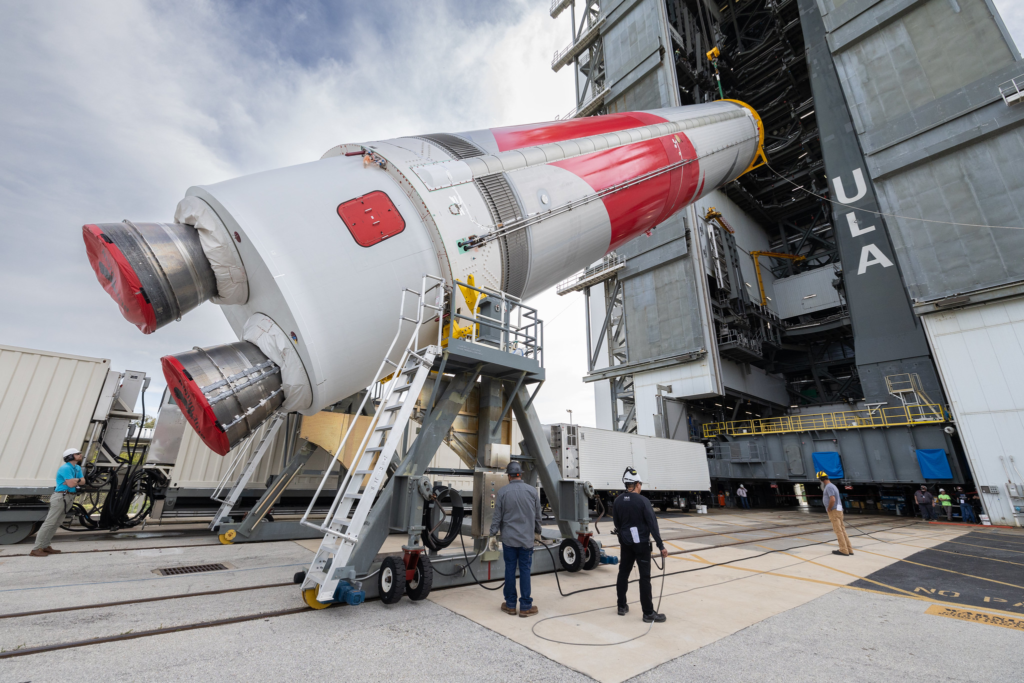
Vulcan Just Completed New Taking Tests
The Vulcan Centaur has been very busy as it prepares to lift off for the first time just over a month from now. United Launch Alliance is currently in the process of testing each and every system on the rocket. This includes various tanking tests that look to have provided great results.
In terms of the upcoming mission, there is a lot riding on the success of Vulcan. The next generation rocket already has more than 70 launch contracts despite never being off the ground, with customers including the US military, Amazon, and more. These missions will likely suffer delays, which could be a big deal for future scheduled missions including the first launch of Dream Chaser Tenacity.
All this being said, ULA has an impressive record when it comes to launches and mission success. While there have been quite a few delays regarding this maiden flight, the company wants to make sure everything is in place and avoid any mistakes. Here I will go more in-depth into the testing that was just completed, what it means for the launch date and timeline, what to expect in the coming weeks, and more.
Tanking Test Complete

The current scheduled launch date for Vulcan is May 4th. Just over a week ago on March 9th, the VLP transported the rocket from the Vertical Integration Facility (VIF) to Space Launch Complex (SLC)-41, riding the rails that connect the two locations. Yesterday ULA tweeted saying, “Completing the next phase of testing in preparation for the inaugural #VulcanRocket flight, the United Launch Alliance team accomplished tanking demonstrations in the Count down to Vulcan.”
Specifically, the pathfinder tests filled the Vulcan first stage and Centaur V upper stage with cryogenic propellant on separate days to validate performance of the stages, Vulcan Launch Platform (VLP), Space Launch Complex-41 facilities, and ground support systems. The tests, which also verified countdown steps, procedures and timelines, were successfully performed on March 10th on the Vulcan booster stage and March 16th on Centaur V. For both tests, the “Preps and Tanking Team” shift of launch console operators initiated the countdown to power up the rocket, perform testing and complete final configurations for cryogenic propellant loading.
During the planned countdown hold, the launch pad was verified clear of all personnel and the authorization was given to proceed into tanking of the rocket. The transfer lines at the pad and the flight hardware underwent chill down procedures to thermally condition equipment against the harsh temperature shock of the propellants. Once that was achieved, the cryogenics began flowing into the rocket. The Vulcan booster uses Liquefied Natural Gas (LNG) and liquid oxygen; whereas Centaur V is powered by liquid hydrogen and liquid oxygen.
A shift change in the control room saw the “Detanking and Securing Team” take over to drain the propellants back into the pad storage tanks, safe the rocket, and power it down. Right now Engineers are reviewing the tanking test data collected and information gained in test objectives aimed at characterizing the performance of hardware and confirming analytical predictions. With the tanking tests now accomplished, the Vulcan Launch Platform will disengage from the pad systems for transport of the Vulcan rocket to the Vertical Integration Facility (VIF).
The next step in the countdown to the inaugural launch includes conducting a Wet Dress Rehearsal (WDR) to practice the day-of-launch activities and then performing a Flight Readiness Firing (FRF) to complete the full Terminal Countdown sequence, ignite the engines and demonstrate a hot-fire abort recycle and saving. After the FRF, the rocket will return to the VIF for the installation of two solid rocket boosters and its payload for launch. The first launch features multiple unique payloads going to completely different places such as Astrobotic’s Peregrine commercial lunar lander meant to intercept the Moon. In the past, this specific payload caused some delays but should be ready and shipped if not already in possession of ULA. This first mission will also deploy two Project Kuiper prototype broadband satellites into low Earth orbit for Amazon, and carry a Celestis memorial payload into deep space.
Days ago Tory Bruno confirmed that not all of the 4 four payloads had been delivered to the company and they were still waiting for some. Once delivered they will be installed right before launch at the last moment.
Vulcan’s Design

Now that we know more about Vulcan’s tanking tests and what exactly is next for the rocket, we can take a closer look at its design and the payloads being launched. The biggest payload on board is the Peregrine Lunar lander. This lander is designed to precisely and safely deliver payloads to lunar orbit and the lunar surface. Payloads can be mounted above or below the decks, inside or outside of enclosures, and can remain attached or deployed according to their needs. The scientific objectives of the mission are to study the lunar exosphere, thermal properties and hydrogen abundance of the lunr regolith, magnetic fields, and the radiation environment.
The next payload has to do with a massive launch contract that Vulcan was awarded by Amazon not long ago. Early last year, Amazon delivered part of its roadmap for Project Kuiper, a low Earth orbit (LEO) satellite system designed to provide fast, affordable broadband to unserved and underserved communities around the world. They announced that they secured up to 83 launches from three commercial space companies—Arianespace, Blue Origin, and United Launch Alliance (ULA)—to provide heavy-lift capacity for the program. These agreements mean they have enough capacity to carry into space the majority of the 3,236 satellites that make up the satellite constellation.
The three agreements include 38 launches on ULA’s Vulcan Centaur rocket, 18 launches on Arianespace’s Ariane 6, and 12 launches on Blue Origin’s New Glenn, with options for 15 additional launches. On the upcoming launch, Vulcan will send two of these satellites into LEO for testing and a demonstration.
Lastly, in January of last year, Celestis announced that it had entered into a launch services agreement with United Launch Alliance (ULA). In the agreement, ULA will host a Celestis Memorial Spaceflight payload aboard the initial flight of ULA’s Vulcan Centaur. Known as the Enterprise Flight, the Celestis mission will launch more than 150 flight capsules containing cremated remains (ashes), DNA samples, and messages of greetings from clients worldwide on an endless journey in interplanetary space. Altogether these combine to create the four different payloads going to different locations and for unique reasons.
Moving on to the design, the Vulcan Centaur rocket is trying to introduce new technologies and innovative features to create one of the highest value launch services with optimal performance to meet the full range of mission requirements. Vulcan Centaur consists of a single booster stage powered by a pair of BE-4 engines, and the high-energy Centaur upper stage powered by two RL10 engines. Logging an impressive record of nearly 400 successful flights and nearly 700 firings in space, RL10 engines, manufactured by Aerojet Rocketdyne, harness the power of high-energy liquid hydrogen. The RL10 boasts a precision control system and restart capability to accurately place payloads into orbit. The Vulcan payload fairings were also a main area of focus. The payload fairing (PLF) provides a controlled, safe environment for spacecraft during ascent. All ULA PLFs are configured for off-pad payload encapsulation to enhance payload safety and security and minimize on-pad time.
The spacecraft is encapsulated in a 5.4-m- (17.7-ft-) diameter payload fairing (PLF), a sandwich composite structure made with a vented aluminum-honeycomb core and graphite-epoxy face sheets. The bisector (two-piece shell) PLF encapsulates the spacecraft. The payload attach fitting (PAF) is a similar sandwich composite structure creating the mating interface from spacecraft to second stage and payload fairing. The PLF separates using a debris-free horizontal and vertical separation system with spring packs and frangible joint assembly. The payload fairing is available in the 15.5-m (51-ft) standard and 21.3-m (70-ft) long configurations.
For additional power at liftoff, up to six solid rocket boosters can be added to the Vulcan Centaur rocket. They are constructed out of a graphite-epoxy composite with the throttle profile designed into the propellant grain. GEM solids supported the Delta II and Delta IV rockets, and the GEM 63 variant will fly on ULA’s Atlas V rocket prior to the first Vulcan launch. By making launch more affordable, Vulcan Centaur opens up new opportunities for space capabilities, offering unprecedented flexibility in a single system. From low-Earth orbit to Pluto, the single-core Vulcan Centaur is hoping to do it all. Not to mention, ULA has been heavily investing in modifying its factory in Decatur, Alabama, and modernizing its infrastructure at the launch facilities in Cape Canaveral, Florida, to support Vulcan rockets. Not long from now, Space Launch Complex-41 (SLC-41) will be the first dual-use pad launching both Atlas V and Vulcan rocket families.
Conclusion
ULA is closer than ever to the first launch of Vulcan. While its other rockets such as Atlas V and the Delta IV heavy are slowly but surely coming to their last launch, Vulcan is getting ready for a very busy schedule. In the coming weeks, we can expect some more testing on the pad before the maiden flight in early May. We will have to wait and see how it progresses and the impact it has on the space industry.
